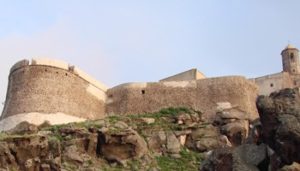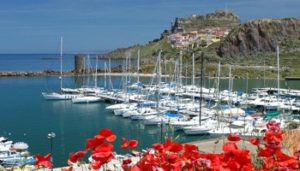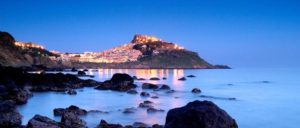The City
Castelsardo is a medieval town located on the Gulf of Asinara in the north of Sardinia, preserved virtually intact thanks to its particular geographical postion, perched atop a promontory high above the sea that has protected it from attacks and destruction over the centuries. With the numerous historical monuments and works of art that still characterise Castelsardo today, dating all the way back to the epoch of the first prehistoric settlements, the present-day speaks of its illustrious past as the city of the Doria family, an Aragonese stronghold, and Royal City of Sardinia. Castelsardo today is a well-equipped tourist town, with a marina and beautiful beaches and small inlets perfect for a pleasant summer holiday. Throughout the year, rituals and traditions such as the famous Festa di Lunissanti mark the everyday life of the town, characterised by the industrious work of basket-weavers, fishermen, and farmers.
History

The history of Castelsardo dates back to the Neolithic era, with the Paleo-sardinian culture. The most important archaeological remains of this period in the territory of Castelsardo include the Domus de Janas, literally House of Fairies, funerary constructions dug directly into the rock. The most characteristic element of the landscape around Castelsardo are the famous nuraghi. Present in large numbers in the Anglona region, the exact use of these remains of the Nuragic culture is still open to debate. The most plausible hypothesis is that they were fortifications, points of control on the territory organised with a settlement around them, mainly comprising round huts with hearth in the centre. Between the latter half of the 8th century and the 7th century B.C., the Phoenicians arrived in Sardinia, followed by the Carthaginians as the first true foreign domination of the lands of Sardinia until the arrival of the Romans. The history of Sardinia in the Roman period is one of cities, peoples, armies, and conflicts, but also of important developments such as the building of the first roadway system on the island, still in use today. Essentially two cities were the starting points from which all the other roads of the island were developed: Olbia and Tibula, which may be the present-day Castelsardo, a hypothesis based on the geographic coordinates reported by Ptolemy. The turning point came in the 10th century with the Doria family of Genoa who, during the struggles between Maritime Republics with Pisa, fortified the promontory for commercial reasons, baptising it Castelgenovese. The Dorias developed both the town planning and the political-administrative order by means of Statutes, documents containing regulations for governing the city’s activities. It was a period of wars and struggles both within the family and against the Aragonese, to whom Matteo Doria ceded the city in fiefdom in 1357. In 1448, the Aragonese definitively conquered Castelgenovese, changing its name to Castellaragonese and raising it to the status of Royal City, thus directly dependent on the court of Spain. This enabled the city to enjoy relative autonomy; the Statutes of Galeazzo Doria remained in effect and the fortifications were restored. It was also in this period in which the Cathedral was built, following the transfer of the Episcopal See from Ampurias in 1502. The town was occupied continuously by the Aragonese up till the advent of Savoy rule in 1720, when Charles Emanuel III gave it the new and definitive name of Castelsardo, finally releasing the town from any reference to its dominators.
The Territoty

Castelsardo is situated in the region of Anglona in the province of Sassari, in a very special position perched high above the sea and dominating the inland landscape, which is primarily hilly. The territory has views of rare beauty characterised by the calcareous rock, with plateaus and tablelands furrowed by erosion, forming gorges and cliffs. The prevalent vegetation comprises the types of plants typical of Mediterranean maquis, which developed not just along the coast but inland as well, while wooded areas extend for no more than a few dozen hectares. On many of the slopes, the bodies of water, primarily the Coghinas river, have carved deep gorges where it is not rare to see the formation of rather large caves. In the inland zones one commonly sees herds of sheep or cattle at pasture, the most characteristic element of the Sardinian landscape.
